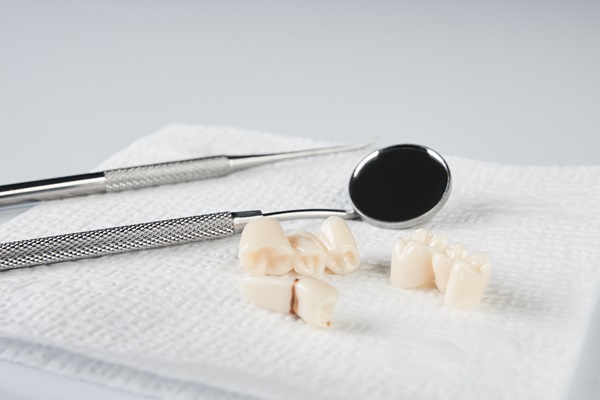Reasons for Bone Grafting Before Dental Implants

A bone graft before dental implants is an important aspect of the procedure that must be performed correctly to ensure successful implant placement and stability in the jawbone. However, before you consider going under the knife, it’s important to know what grafting does and why it’s necessary for your dental implants to work properly. Here are some reasons why you may need grafting before dental implants.
Overview
Your dentist has recommended that you receive dental implants. You’ve decided to move forward with your dental implants, but before you can get started, your dentist will need to evaluate whether grafting is required to ensure enough support within your jaw. Understanding grafting and how it may be relevant for you is essential for making an informed decision about your treatment options.
What is a bone graft?
Sometimes, if you want to place dental implants in an area with enough natural bone, your dentist will recommend that you get this procedure. A graft is performed by taking some of your bone from one part of your body and placing it into another (your mouth). The procedure helps to provide a solid foundation for which dental implants can be securely anchored. Your dentist will advise when a graft is necessary, as well as which teeth are good candidates.
Why do I need grafting before dental implants?
A bone graft is a surgical procedure used to improve bone quality around an area of dental extraction. Several different things can cause poor-quality bone. If there isn’t enough space to fit dental implants in between your jawbone and teeth, then a graft is performed first to make room for your new dental implants. After sufficient healing time has passed (a few months), you will come back into the office where the dentist will prepare your jaw again with another round of surgery where they place your new dental implants!
Different kinds of grafts
There are several types of grafts used in dentistry. Socket Preservation, Ridge Augmentation, and Sinus Lift are the most common. Your dentist can discuss these with you in detail to determine which one will work best for your situation. Each has its benefits and side effects that need to be considered when deciding what kind of graft is right for you.
Socket Preservation is used to keep a jawbone during dental implant surgery. The bone around your current tooth is saved and then grafted to allow an implant to be inserted to secure it in place.
Ridge Augmentation is another technique used with dental implants to improve your jawbone structure. This treatment method uses a graft to build up more bone on an existing ridge, increasing its strength and giving it a larger surface area to hold an implant.
Sinus Lift is another method used in conjunction with dental implants. This technique involves using grafts to lift your jawbone and allow more space for dental implants to be placed. This technique is done through a small incision made inside your gums, creating a space under your gums in which an implant can then be placed.
Check out what others are saying about our dental services on Yelp: Bone Graft in Lee's Summit, MO.
Recent Posts
Wisdom teeth removal is necessary for patients whose wisdom teeth are causing problems. Crowding, misalignment, and pain are the common issues that these teeth cause. The dentist will recommend extracting them to prevent more problems from developing. Here are the procedural steps, as well as aftercare tips, that you must consider for wisdom teeth removal.The…
While receiving a referral to a jaw surgeon can raise many questions, our jaw surgeon and team are here to help. We have the professional training and knowledge to ensure patients receive the proper care they need. Our treatment can help address conditions affecting the mouth, jaw, head, neck, and face. We can help determine…
Infections after dental procedures occur frequently and that is primarily due to a lack of education on how to avoid it, however, with the help of an oral surgeon, infections can be avoided in a few ways. Oral surgeons are dental professionals who focus on invasive procedures that are necessary in order to treat or…
Your facial surgeon will prepare you well before your jaw surgery. This invasive procedure can improve your appearance and relieve your pain. It can also enhance your dental health. Here are the important details that your facial surgeon would want you to know before your jaw surgery.The upper and lower jaws are important in completing…


